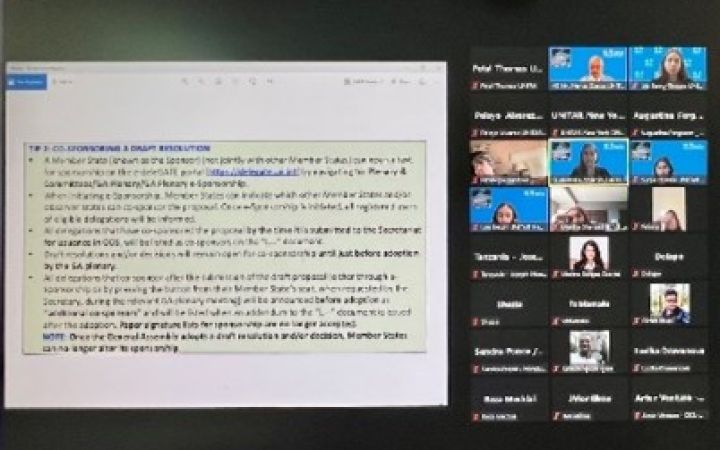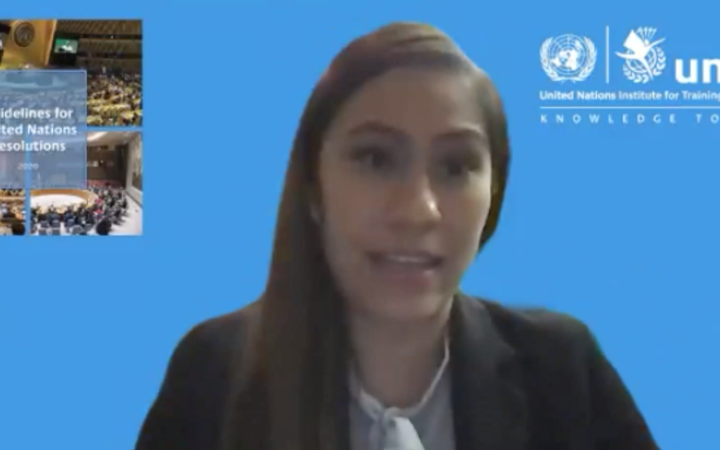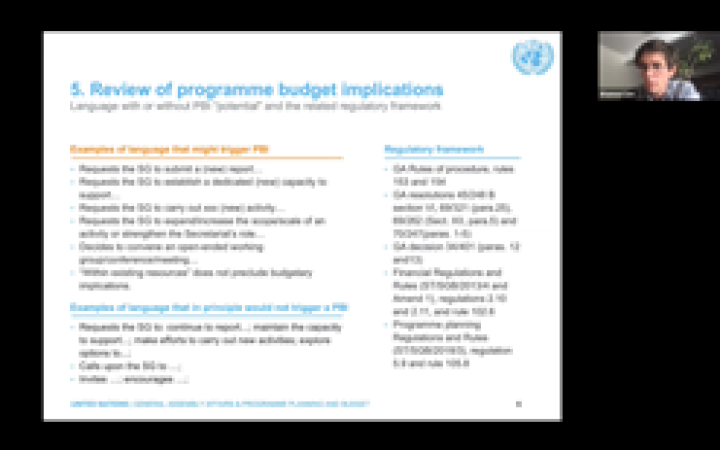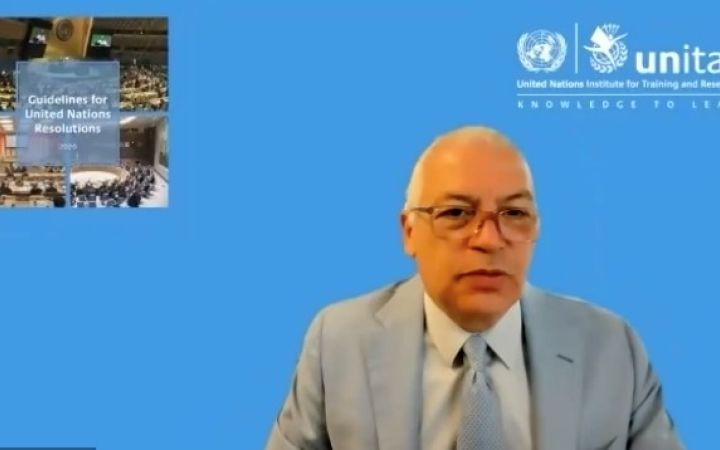22 and 23 June 2022, New York, USA - The United Nations Institute for Training and Research (UNITAR) New York Office hosted a two-day informational course on the structure, drafting and adoption of UN resolutions. This course was supported by SIDA international developing agency with a contribution to the UNITAR Strategic Framework Fund, under the programme ‘Leveling The Playing Field.’ This programme focuses on the development of skills and knowledge of Least Developed Countries. This workshop is held yearly as a core training courses for UN delegates. This year’s course had a successful registration rate of 450 people and close to 200 active participants. Mr. Pelayo Alvarez opened the course by showing UNITAR’s helpful and easy descriptive video on UN resolutions, UNITAR’s Guidelines for Drafting UN Resolutions Animated Video, which touches upon the topics discussed more in depth in UNITAR’s book “Guidelines for United Nations Resolutions”, UNITAR’s UN Resolutions Book. Mr. Marco A. Suazo then offered his welcome remarks and introduced the panelists.
The course started with ‘Session I: The Agenda of the General Assembly’, led by Mr. Kenji Nakano, Chief of the General Assembly Affairs Branch at the Department for General Assembly and Conference Management. The first session was focused on the preparation of proposals. Mr. Nakano outlined what the Agenda of the General Assembly meant and entailed, explaining how it covered several areas. Participants were walked through how items make it into the Agenda, how to request for inclusion of a new item, as well as the process behind the consideration for said inclusion. Mr. Nakano ended his address with an informative Q&A.
The panelist for ‘Session II: Rules of Procedure’ was Ms. Tomoko Iwata, Senior Legal Affairs Officer at the Office of Legal Affairs, who detailed the UN procedures and voting. She went over how quorums affect the process, how amendments and revisions are implemented, and the functioning of procedural motions. To conclude her presentation, Ms. Iwata reviewed voting rights, voting on amendments and on separate paragraphs, majority voting count, withdrawals of motions, and reconsideration of proposals. Ms. Iwata wrapped up with an insightful Q&A and scenario-based discussion.
The final session of Day 1, focusing on co-sponsorship of proposals, counted two expert panelists. Mr. Marco A. Suazo insisted on the importance of gaining support from other Member States. He recalled reaching out to neighboring states for support, basing his argument on their shared goals and values. Sharon Bernardeth Juárez Argueta, from the Permanent Mission of Guatemala to the United Nations, went on to detail the step-by-step process of finding co-sponsors, working through defining objectives, priorities, and options, as well as the varying processes based on the specificities of the resolution.
Day 2 of the event was moderated by Ms. Lea Beuzit and Ms. Surya Gowda. Mr. Wannes Lint, Intergovernmental Affairs Officer at the General Assembly Affairs Branch, led a partially interactive ‘Session IV: Submitting Draft Resolutions’ with an outline of the submission process and a mock resolution drafting exercise. Mr. Yacine Hamzaoui from the Programme Planning and Budget Division went on to outline budget implications during the following session focused on budget implications and mandate reviews. Mr. Hamzaoui went over necessary actions to be taken if there are financial implications to a resolution, if there are no financial implications, language that might trigger a PBI, the timing of drafting a resolution in regard to the budgeting process, financial and programme regulations/rules, and regulatory framework. This review covered the specifics on the submission of proposals.
The final panelist was Ms. Anne-Laure Michallet from the English Translation and Editorial Service in the Department for General Assembly and Conference Management, who covered the session focusing on the editing of proposals. The goal is to make all submitted resolutions clear, accurate, grammatically correct, consistent with UN standards, well-punctuated, and translatable into the other five official UN languages. The sessions ended with Mr. Marco A. Suazo’s closing remarks.





